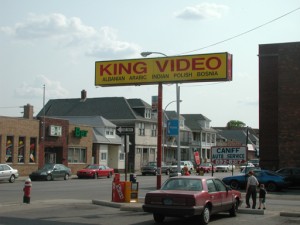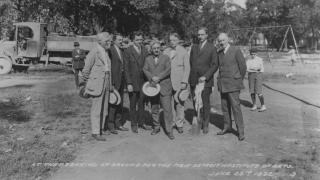

Hundreds of southeast Michigan residents flock to Hamtramck to get their fill of paczkis before the Lenten season kicks off.
The small community located in north Detroit is known for its Polish roots, but over the past 20 years, Hamtramck’s population has experienced great diversification.
Thus, its business community has transformed due to a vast increase in Eastern European, Arab and South Asian Muslim residents.
Sally Howell, assistant professor of history at University of Michigan-Dearborn, wants to learn more about how Hamtramck’s diversification has affected its business community.
“I’m interested in the Hamtramck community and all the demographic, cultural and business changes that it’s undergoing,” Howell said. “What are the dynamics that make it all work?”
Thanks to a grant from the College of Business’ Betty F. Elliott Initiative for Academic Excellence, Howell plans to map out how Hamtramck’s business community reflects the spike in new residents, new religious institutions and new cultural practices.
“Many Muslim immigrants and African American Muslims are moving to this area because it’s a comfort to them to move into an urban space with existing mosques and an existing infrastructure that caters to Muslim daily life,” she said.
Immigrant entrepreneurs now market hijabs and saris, halal meat, kalojam and baklawa alongside the older stores, which specialize in sausages and paczkis. A Muslim funeral parlor recently opened on Joseph Campau Street and plans also are in the works for a halal barbecue joint.
Howell’s research fits with the theme of this year’s Elliott Initiative – “Doing Business in Detroit.” UM-Dearborn faculty, staff and students recently submitted proposals that aimed to improve the university’s understanding of Detroit’s entrepreneurial ecosystem and the work of urban entrepreneurs.
“I’m interested in the urban revitalization and population growth occurring in and around Hamtramck,” she said. “Many times, it’s low-income immigrants who are really transforming the city. Urban planners need to count these populations, too, among the ‘creative classes’ they seek to attract to Detroit.”
Howell’s project was selected for the grant funding, which covers expenses through the end of the year. She plans to use a portion of the funding to hire a dozen student workers, who can assist in the research process.
Students interested in working with Howell on the project are encouraged to contact her at [email protected].




